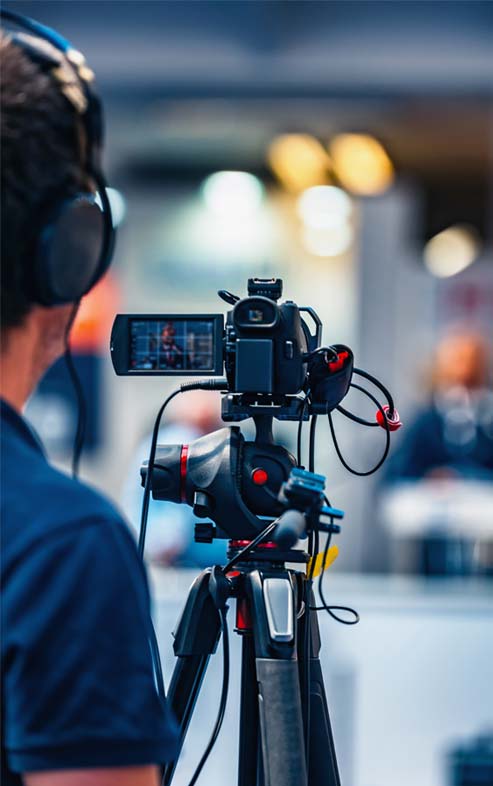L I V E S T R E A M
Ready to livestream? Contact us to start your broadcast.
Real-Time Broadcast Of Your Event Or Performance
Using a livestream broadcast, you can transmit your event to virtually anywhere there is a valid Internet connection. Users from around the world can view, and under some circumstances, participate interactively in your presentation. 12VoltArts uses the latest technology in cameras, switchers, encoders and servers to provide a seamless and high-definition presentation to your audience.
You can also choose the best platform for your users. Facebook and other social media is a popular option; your audience simply needs to follow a link to your transmitted feed. Many times Vimeo or a private webpage is the best presentation platform to control the broadcast of your event. In any case, tuning into the broadcast is an easy and fulfilling process for your audience.
Should some audience members miss the live event, or in the case you want a recording of the presentation, 12VoltArts offers a fully-rendered copy of your event at the end of the program. Many social media platforms will also maintain a copy for later viewing.
Whatever type of presentation, event or conference you are expecting, 12VoltArts can offer a turnkey solution to manage the broadcast of your transmission.

Platform Options
Social Media
Social media provides wide-spread usage and adoption in addition to ease-of-use. Users are able to log into their social media account to view content as well as utilize interactive tools such as likes, comments, chat and other features to enrich the livestream experience.
Private or Public Web Site
If the presenter requires further control of the platform, a terrific option is to host the feed directly onto the presenter’s website. The video can can be locked with a password, or available to the public. A series of other features may also be implemented.
Direct-To-Device
With Direct-To-Device, a signal is sent over from an IP address and transcribed on the user’s device, such as a set-top box, a browser, tablet, or mobile phone. This method can be used when no platform is available or appropriate, and can be controlled by the presenter’s side. Some tools for control can be available to be directed by the user.


